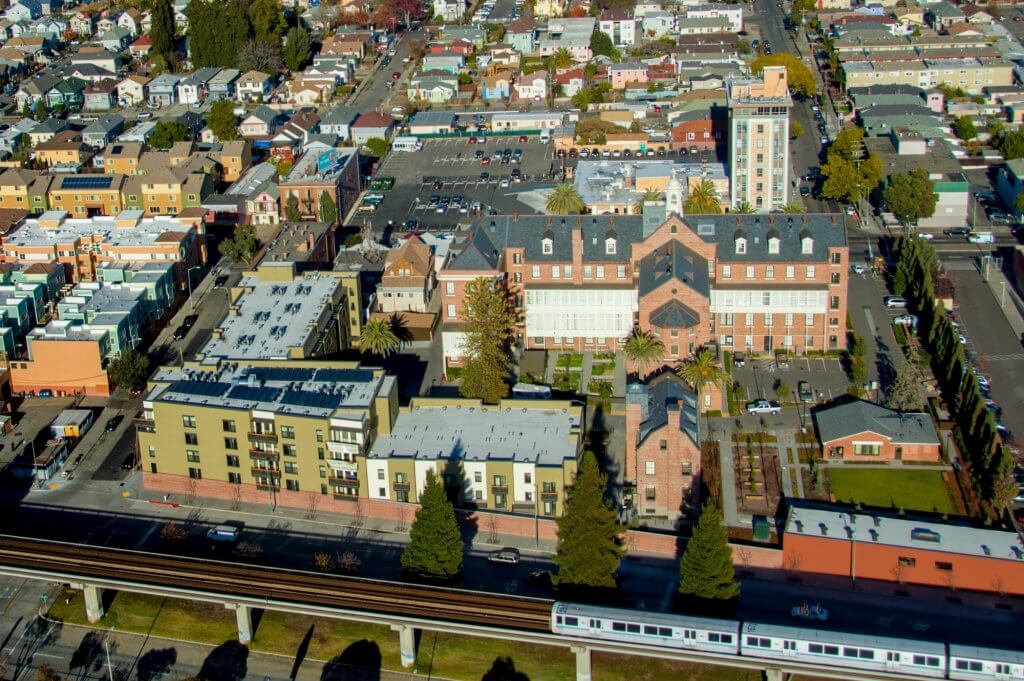Land Use Politics, Housing Costs, and Segregation in California Cities
Published On September 5, 2019
By Jonathan Rothwell, PhD, Gallup
This paper is part of a working paper series that utilizes the Terner Center California Residential Land Use Survey to assess the implications of California’s state and local policies for housing. Read the full paper here.
It is striking that, at a time when a lack of housing affordability is a highly salient issue for the public and elected representatives, California uses its land so inefficiently. While less than a quarter of the land in the state’s municipalities is zoned for multifamily housing, more than half is set aside for single-family detached homes. Density is closely related to housing affordability, and in California, communities dominated by single-family homes on large lots have seen housing prices soar.
Drawing on data from the Terner Center California Residential Land Use Survey, I examine the relationship between anti-density zoning regulations–namely, single-family zoning and large minimum lot sizes–and housing prices. I unpack how land use and the political context that underpins opposition to development relate to racial and occupational segregation. I find that:
Anti-density zoning and local opposition to housing predicts higher prices.
Municipalities with a higher share of land zoned for single-family detached homes and larger minimum lot size requirements had more expensive and larger homes than municipalities with less stringent zoning standards in the same metropolitan area.
Political opposition also predicts housing costs. Cities and counties where residents and officials supported new housing have significantly lower rents and lower home values than unsupportive communities. Opposition predicts delays for projects, even those that meet local codes. I found that such delays are also associated with higher home values.
Cities and counties with more educated and white residents are more likely to experience opposition to new housing, which can stymie projects that meet local standards.
When comparing cities and counties that fell into the highest and lowest tiers of support for housing, the least supportive areas had higher shares of non-Hispanic Whites (49% compared to 34%) and residents over 25 with a Bachelor’s degree or higher (43% compared to 22%).
While political opposition to development is not correlated with anti-density zoning, a lack of local support for housing can restrict supply in other ways. Higher levels of opposition significantly increases the probability of delays for single- and multifamily projects of 5 or more units.
Areas that reported the strongest public opposition were also more likely to link opposition and public meetings to delays for new projects, and those areas were also 10% less likely to have loosened their zoning laws in the past 5 years than areas with the most support.
Cities and counties that are dominated by single-family zoning are more racially segregated.
After controlling for key factors, areas dominated by land zoned for single-family detached homes are more likely to contain higher shares of White residents and lower shares of Black and Hispanic residents. Larger minimum lot size requirements also predict a lower proportion of Hispanic residents, but were not significantly related to Black population shares. Citizen opposition to development also predicts the exclusion of Black and Hispanic residents.
The data suggest that restrictive zoning results in segregation by raising housing costs. After controlling for median home price, zoning ceases to be a significant predictor of the area’s share of population that is Black or Hispanic.
Jurisdictions that rely on anti-density zoning exclude blue-collar workers.
Communities with a high proportion of land zoned for single-family detached homes and with higher lot size requirements are both significantly less likely to house blue-collar workers. Conversely, political support for development strongly predicts an increased share of blue-collar workers. Restrictive jurisdictions like Palo Alto would have to double their share of workers in blue-collar occupations to equal the average for its larger metropolitan area.
Segregated residential patterns are not inevitable, but zoning helps perpetuate them.
My working paper contributes to a body of research that suggests local land use regulation and opposition to housing development explains some of the variation in housing costs and segregation. However, my analysis cannot identify causation, in part because local zoning is not randomly constructed.
Some scholars postulate that zoning was developed in the 1920s in the United States in response to political demands to deal with negative externalities, to reduce political competition for elites, and limit their economic and social interaction with immigrants and Black migrants.(1) If so, the absence of restrictive zoning would result in communities that are more balanced and integrated by race and class, as suggested by this analysis.
The share of land allocated to single-family detached as opposed to other uses is consistently associated with higher prices and segregated populations, as are minimum lot size requirements, and planner assessments of political support for development. These results can be regarded as additional evidence that high housing costs and segregated residential patterns are not an inevitable outgrowth of housing markets but emerge from the political economy of housing regulations.
(1) Trounstine, J. (2018). Segregation by Design: Local Politics and Inequality in American Cities. (Cambridge, England: Cambridge University Press); Rothwell, J. (Forthcoming 2019). A Republic of Equals: A Manifesto for a Just Society (Princeton, NJ: Princeton University Press).





